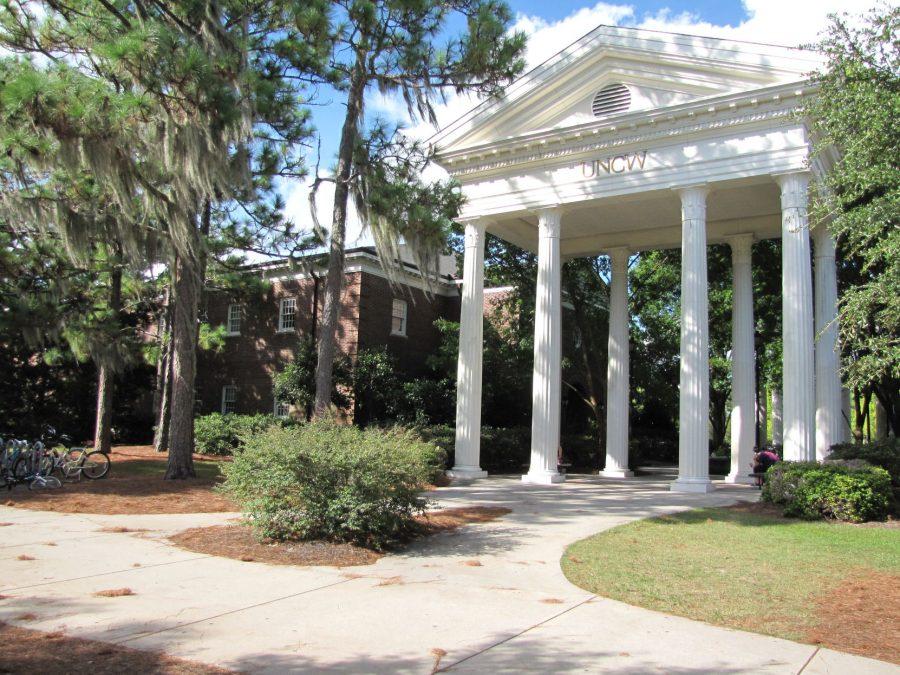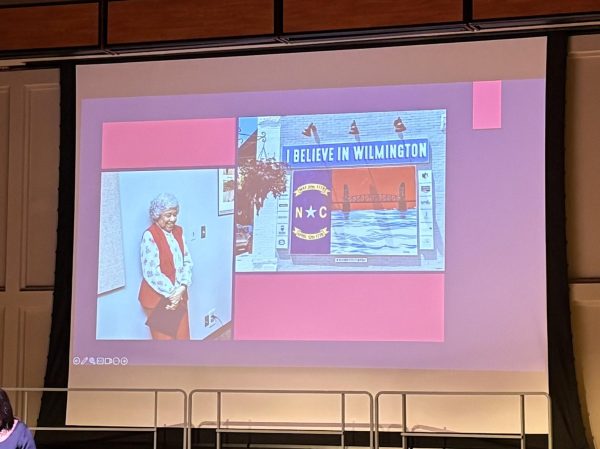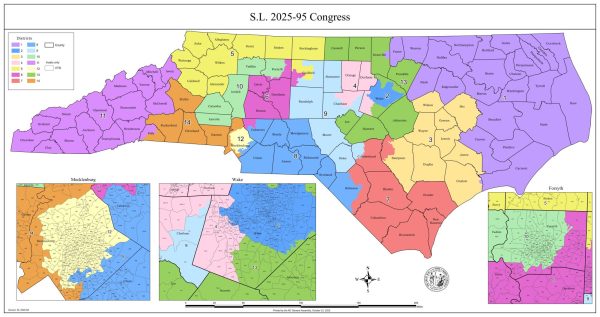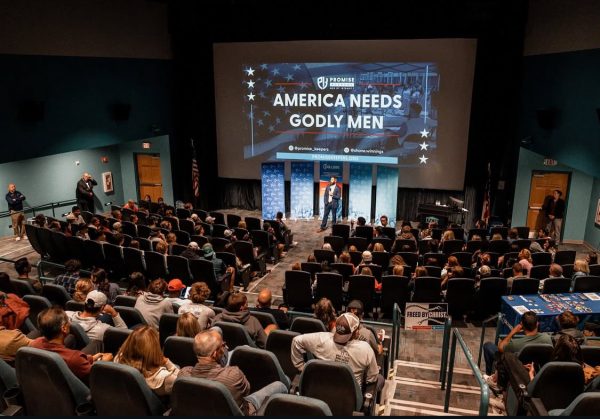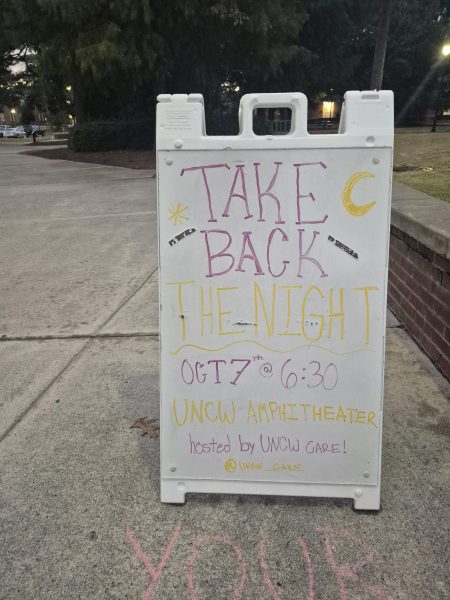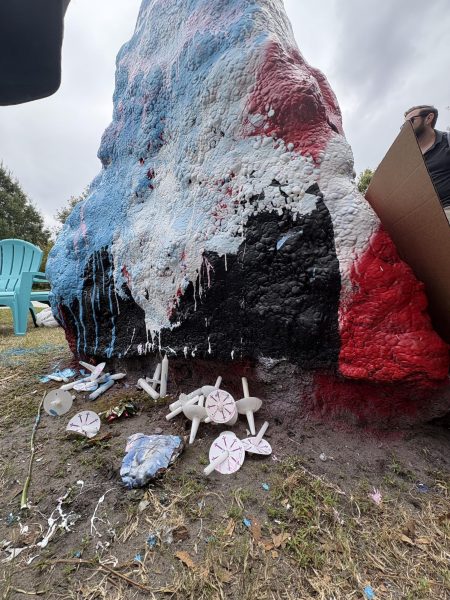Morton Hall’s identity embraced as campus evolution continues
On a campus that is always thinking bigger, better and newer, regulars of UNC Wilmington’s Morton Hall have attempted to embrace the hall’s unique identity. They believe that Morton Hall has the ability to take you back in time, slow you down and invite you to engage with its many quirks. An initiative called “Keep Morton Weird” started in the spring of 2015 when Kevin McClary of Dr. Sarah Hallenbeck’s rhetorical theory class was inspired by a class reading and created the catchy slogan capturing the essence and character of Morton Hall, which opened in 1978 as the Humanities Building.
“Keep Morton Weird has become a mindset, an orientation towards the English department’s identity within the larger university,” said English professor Dr. Kate Maddalena. “We in Morton, as representatives of the humanities, want to resist the neat, gridded, quantitative mindset and the data-driven way of being that has begun to be privileged in higher education. Keep Morton Weird celebrates the messy, non-linear, artistic, poetic and holistic. Our halls are eclectic, visually-engaging, confusing, exciting and odd.”
“In some ways Keep Morton Weird is a way of championing the fact that we don’t maybe necessarily need a new building or even want one,” said English professor Dr. Nicholas Laudadio. “When it comes to making the university modern, sometimes it’s why don’t we keep some weird corners that remind us of what this place used to look like. Keep Morton Weird in some ways is just trying to keep a little bit of what UNCW was and what it is intact.”
Dr. Laudadio has become an unofficial leader for the Morton Hall Beautification Project, a tongue-in-cheek kind of project through which the faculty and students of Morton Hall have decorated its interior with objects that invite learning and come directly from donations and departmental surplus.
A large portrait of William C. Friday, head of the UNC system from 1956 to 1986, and his wife has turned into a shrine in the lobby. The new bookcase downstairs has become a place for people to read, drink coffee and feel like they are tucked away in the corner of a cozy downtown coffee shop. Dr. Laudadio and others have brought in tech-junk such as old Macintosh and Radio Shack computers that are stored in glass cases. Sound recording and mixing machines and old video games like Telstar and Atari are displayed next to an old iMac monitor. Adding TVs and posters that display pertinent information has also played an important role in the revamping of Morton.
“The whole idea is that the building itself is part of the educational process,” said Laudadio. “Just because you are outside of the classroom doesn’t mean you aren’t in a space that encourages that same kind of pursuit.”
Last year Dr. Anirban Ray required his business writing and document design classes to create a blog post on the beautification of Morton Hall to generate student energy and interest in improving the overall look of the building. The majority of student perspectives overlapped in that they wanted to maintain the feel of the building while making it more student-friendly and welcoming.
“The students discussed keeping Morton weird,” Ray said. “They love it anyway, despite all its shortcomings, but it would be better if capacities were created to engage students and invite students to spend time in Morton Hall. It should not feel like we are entering just a building. It should feel like we are entering an English department or a history department, not just Morton Hall, and I think to an extent we have been successful in doing that.”
“A lot of people were talking about painting the walls and having shrines for students who have gone on to have good success,” said English major Chantai Thomas, who participated in Dr. Ray’s project last year. “The whole idea was making it look nicer in general, like having rugs down to make it feel a little bit more like home. I don’t want to lose the spirit of Morton, but it would be really nice to see us get some nicer things like some of the other buildings on campus have.”
The UNC Board of Governors’ 2015-2017 Operating and Capital Budget Priorities report included a six-year capital improvements plan for new construction and renovation projects funded by the State’s General Fund. Over $70 million was requested for the new Allied Health/Human Sciences and Nursing Facility and $15 million was requested to renovate DeLoach Hall.
Listed at number nine on the priority list, down three from the previous year, was Morton Hall Modernization. $17 million has been requested by the UNC Board of Governors for the project with the majority of the money requested for the 2018-2019 school year. While it is still unsure whether or not the renovation is expected to take place, it certainly raises eyebrows from the faculty and students who frequent Morton Hall.
“When you’re slated to be remodeled, they very often gut it and start from scratch,” said Laudadio. “The thing about Morton is we’d rather that not happen. We like it here, in the way that it’s built and the way that it’s laid out, and the style of architecture. So in part we have taken ownership of the space a little bit. I think that when a building is new or remodeled there is a kind of homogenizing process that happens given the nature of building regulations and code and the expectation of the modern university that there is a certain degree of personality that can be lost.”
Lynn Mollenauer, the Department of History chair, said, “The Morton Hall Beautification Project is a reminder to those of us who study the humanities that while the humanities are underappreciated often and underfunded and we work in a building that is one of the oldest on campus, that there is a certain dignity in that and that you can develop your own sense of community. It’d be great if we had more lounge space for students to come and hang out, because I think that’s where people exchange ideas. It’s in random conversations that you have by happenstance. So I would love it if by creating spaces for people to hang out between classes Morton became a place that facilitated innovation, but we’d probably need a few more chairs for that.”



